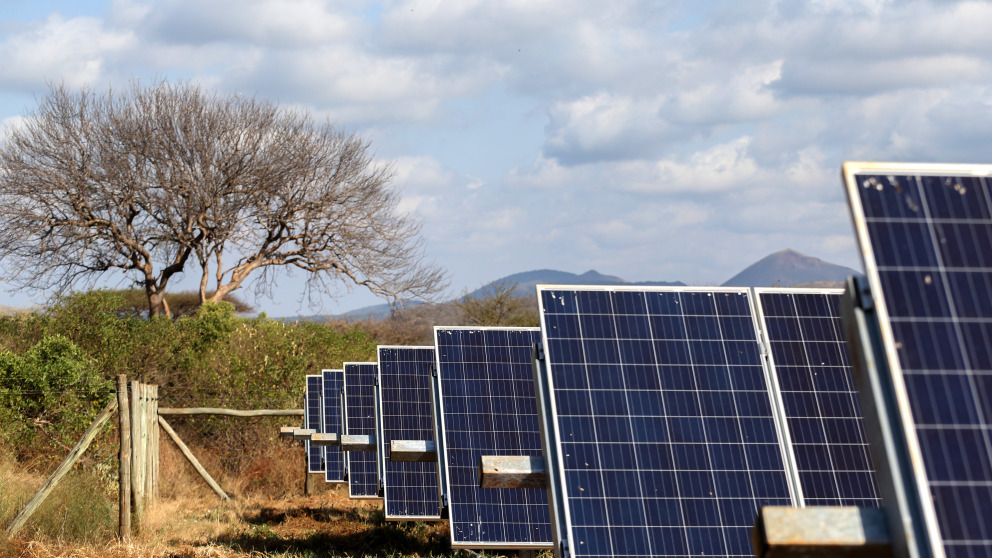Exploring the Nexus of Digital Technologies and Mini-grids for Sustainable Energy Access
08.08.2019
Many countries in Sub-Saharan Africa still struggle to provide their populations with access to clean, reliable and affordable energy. Mini-grids are expected to play an important role in meeting this challenge, particularly in rural and remote areas.

A form of decentralised energy generation, mini-grids consist of an energy source, for example a diesel generator or solar modules, a distribution network, and, in some cases, an energy storage system. Their generation capacity usually lies somewhere between 10 kW and 10 MW. Many mini-grid projects are, however, still bedevilled by a lack of financing and appropriate regulatory frameworks.
A recent IASS report explores how digital technologies could increase access to sustainable energy by improving mini-grids. The report was supported by the German Federal Ministry of Economic Cooperation and Development (BMZ) and the United Nations Industrial Development Organisation (UNIDO) and commissioned by the Gesellschaft für Internationale Zusammenarbeit (GIZ). It was prepared in cooperation with the Reiner Lemoine Institute and Enerpirica.
Digital technologies are already being used in mini-grids, with their application concentrated in two areas. They contribute, on the one hand, to improving technical functionalities and the system balancing of mini-grids at various stages of energy generation, including storage, distribution, control, and demand-side management. On the other hand, digital technologies can be put to good use along the entire mini-grid value chain, for example in the context of financing, planning and design, operation and maintenance, customer management, and the productive use of electricity.
Across these application areas, digital technologies have the potential to optimise processes, reduce costs, and improve services for the consumer. For example, drone imaging and demand estimation using artificial intelligence and geo-information systems (GIS) can contribute to better planning, design, and sizing of mini-grids. This also increases their viability and reliability over the long term. Remote predictive maintenance can reduce downtimes and costly trips to the mini-grid site. Furthermore, integrated mini-grid solutions that provide not only electricity, but also access to the Internet and digital learning materials can foster the development of productive uses and generate new income opportunities.
Nevertheless, the risks of using digital technologies in mini-grids in Sub-Saharan Africa, for example with regard to privacy and data security, should not be forgotten. Research has also shown that the application of digital technologies could deepen existing inequalities within a community. To prevent that scenario, vulnerable groups, including low-income families, the elderly, women, and young people, should be involved in the planning and design of a measure so that their needs are accommodated early on.
Against this backdrop, the report argues that policymakers, donor organisations and technology developers should collaborate to create favourable conditions and new impetus for the appropriate application of digital technologies in mini-grids. In particular, policymakers should create incentives and subsidies for projects aimed at testing digital solutions. They should also support the development of technical and quality standards as well as legal frameworks for data security and consumer protection. Donor organisations could contribute to the purposeful use of digital technologies in mini-grids by setting clear technical requirements in mini-grid tenders and stipulating that non-personal data from the mini-grids they fund is shared. Technology developers in turn should put consumer needs first and consider the specific local contexts in which the technologies are used.
The full version of the report “Exploring the nexus of mini-grids and digital technologies. Potentials, challenges and options for sustainable energy access in Sub-Saharan Africa” can be downloaded here.